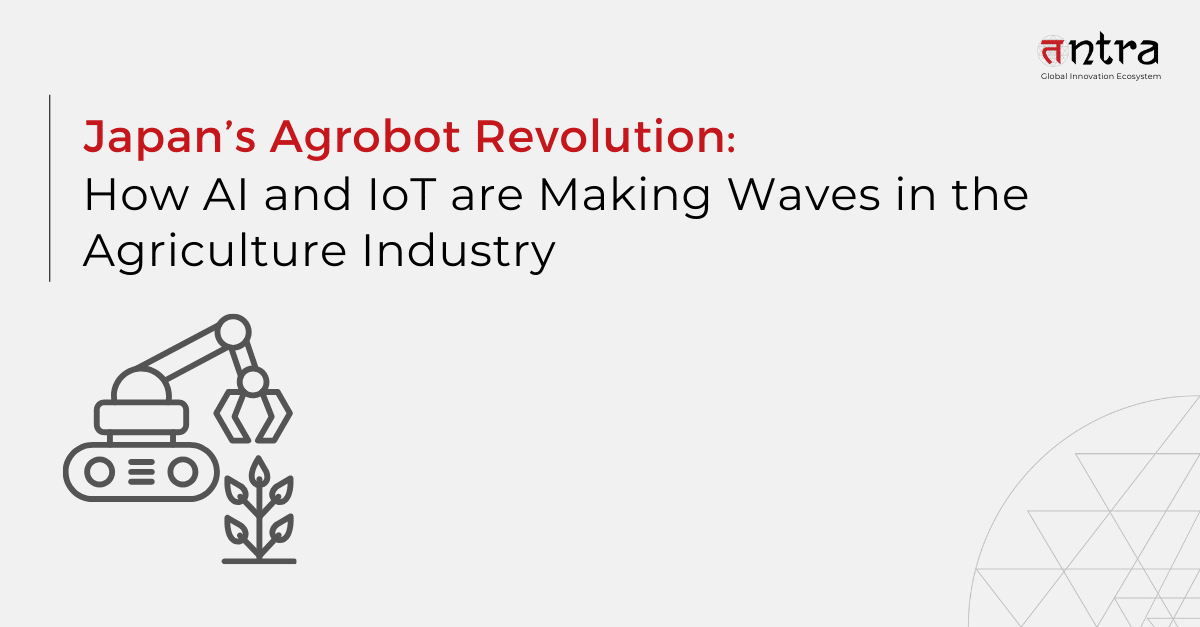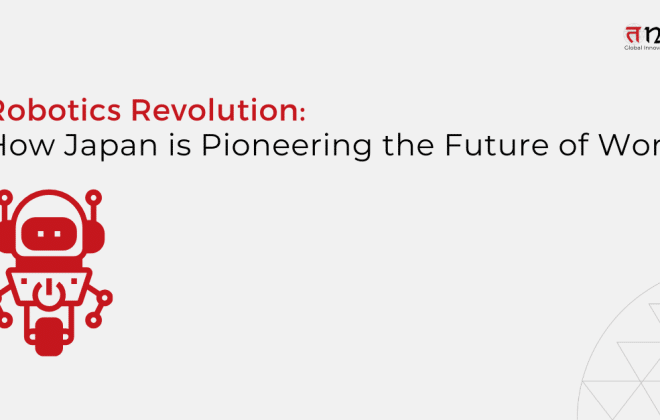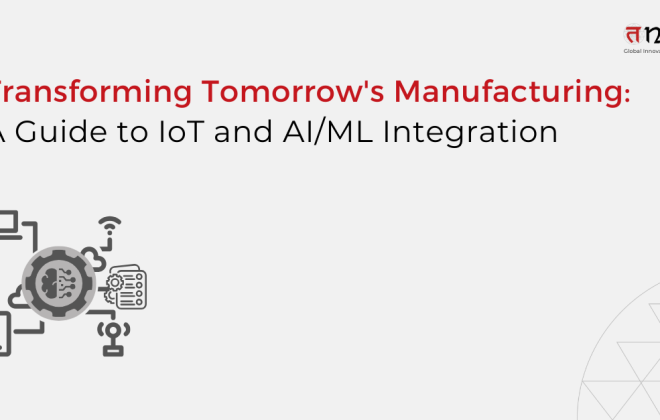
Japan’s Agrobot Revolution: How AI and IoT are Making Waves in the Agriculture Industry
Table of Contents
ToggleSummary
Agriculture innovation is being propelled by Japan’s aging population and labor scarcity. Artificial intelligence (AI) robots are gaining the stage, carrying out jobs like harvesting, watering, and predicting yield by analyzing drone photographs. Like Spread’s lettuce farm, this not only boosts output but also assists farmers in identifying issues and improving crop management. Robots from Inaho harvest tomatoes at night, relieving human laborers of some of their workload. Japanese agriculture is well-positioned for a future with increased automation and productive farming methods as AI and robots advance. Read this blog to know more.
A farm robot being developed by the Japanese company AGRIST aims to address the issue of a labor shortage in agricultural harvesting. The 16kg autonomous bell pepper harvesting robot L was created in partnership with the farmers of Shintomi town, Miyazaki prefecture, a region known for its thriving agricultural industry. It can run continuously for four hours on a single battery charge. L travels along a wire that is put inside the greenhouse, in contrast to the majority of other robots and AI solutions in the industry that operate on the ground. This makes it unnecessary to have a rail on the ground, enabling more straightforward construction and simpler operation all around.
Under ideal circumstances, AGRIST’s L robot can cut off bell peppers with excellent accuracy and a speed of roughly 28 seconds. It can also cut in 180 degrees of direction. Inside the greenhouse, the robot travels on a hanging line that makes it simple for it to navigate over obstructions like leaves and mud. Moreover, the AIoT-based applications automatically trim off extra stems at the same time as harvesting, cutting down on the overall length of the operation.
The automated harvesting robot is a component of the collaborative research project between AGRIST and the local farmers on innovative robotic-agricultural techniques (such as cultivation and tailoring). Leveraging AI generated technology by technology consulting services providers, L gathers and compiles picture data of green peppers in different conditions.
(Source: Designboom)
Japanese Agricultural Robotics Landscape: A Growing Trajectory
Japan’s IoT market is anticipated to develop significantly, with sales forecast to reach US$41.22 billion by 2024. Moreover, it is projected that the IoT market in Japan will develop at a consistent rate of 10.96% every year between 2024 and 2028. These figures demonstrate the enormous potential and opportunities that exist for companies participating in the Japanese IoT sector.
According to a new study by Next Move Strategy Consulting, the value of the Japan Agriculture Robots Market is estimated to be USD 238.73 million in 2022 and is projected to grow at a compound annual growth rate (CAGR) of 16.0% from 2023 to 2030, or USD 846.77 million.
The number of agricultural workers in Japan has decreased by 20% over the past five years, from 1.97 million in 2015 to 1.52 million in 2020, according to the 2020 Census of Agriculture and Forestry. As a result, there is an increasing need for automated solutions, such as robots, which can increase farming productivity and decrease the amount of manual labor required.
How Japan is Harnessing the Power of Robotics for Agriculture
In Japan, the use of smart agriculture and software product engineering solutions is growing, raising hopes that farmers may be able to assign artificial intelligence to more labor-intensive jobs in order to address the acute scarcity of labor.
Leading the way are large-scale greenhouse farmers who have started utilizing AI-enabled robots created by venture firms in ways that appear to fundamentally alter how agricultural goods are grown and harvested in the future.
Here’s how some agrobot initiatives are transforming the Japanese agricultural sector:
- Boost Vegetable Production
- Producing vegetables, Spread said that beginning in mid-2017, industrial robots would handle all but one of the jobs required to grow the tens of thousands of lettuces the company grows daily at its expansive indoor farm in Kameoka, Kyoto prefecture. It is a prime example of AIoT in agriculture in Japan.
- The robots will perform all tasks, including watering, pruning, and harvesting crops, as well as replanting young seedlings. The company stated that the innovation will increase production from 21,000 lettuces per day to 50,000 per day, with plans to increase that number to half a million lettuces per day within five years.
- Predicting Harvest and Yield
- Farmers won’t need to physically visit the field to receive predictions of when to harvest and what kinds of harvests to anticipate, thanks to artificial intelligence (AI) analyzing drone photos. It can even precisely count the number of fruits or vegetables in a field and determine their size and growth rate thanks to high-resolution images.
The technology from the IoT development company can identify leaf color and identify any weeds that may have sprouted thanks to high-resolution photos. This enables farmers to more effectively maintain crop health by quickly identifying and addressing issues like pests, weeds, and plant diseases. Farmers can compare the condition of their fields to past performance by using the data that is accumulated when they use these services more frequently.
- Farmers won’t need to physically visit the field to receive predictions of when to harvest and what kinds of harvests to anticipate, thanks to artificial intelligence (AI) analyzing drone photos. It can even precisely count the number of fruits or vegetables in a field and determine their size and growth rate thanks to high-resolution images.
- Automated Harvesting
- A farm in the Netherlands has hired an AI-equipped robot from Inaho Inc., an agricultural venture and software product engineering company located in Kamakura, Kanagawa Prefecture, close to Tokyo. Depending on the mechanism used, it can harvest cherry tomatoes mechanically in bunches or one at a time.
- Before the robot uses its arm to collect the tomatoes, the AI examines photos and chooses a number of ripe and manageable tomatoes. Harvesting robots must have a complex mechanism because tomatoes gather around the leaves and stems; this adds to the cost of designing robots that can complete the full procedure. For this reason, Inaho has created a robot that harvests about 40% of fully ripe tomatoes at night and lets humans handle the other 40% during the day.
Agrobots: The Future of Japan’s Agriculture
Japan’s agriculture sector is in a good position to take advantage of important technical developments like robotics, AI, and IoT development services. With the continuous advancement of technology, agricultural robots in Japan have the potential to grow more complex, intelligent, and capable of carrying out a wider range of jobs with improved precision and effectiveness. It is anticipated that the country’s market will have plenty of opportunities due to these developments in agricultural robots.
Although AI is advancing, we have seen firsthand that in order to handle the technical and operational difficulties correctly and to make the unit economics work for both your customer and your own business, you need to construct your own full-stack robotics platform.
If you want to take advantage of Japan’s technological advancements in agriculture, Tntra is a leading software development company in Japan that can bring your engineering dreams to reality. With our 100+ domain experts and engineers, kickstart your journey in agricultural-based digital transformation solutions and contribute to Japan’s agricultural revolution.
Book A FREE CONSULTATION CALL today!





